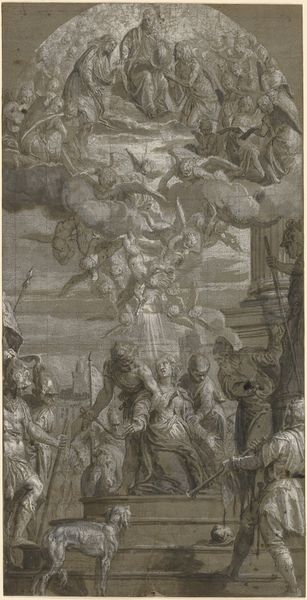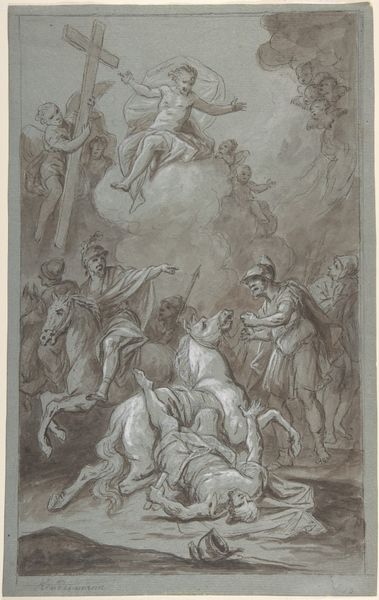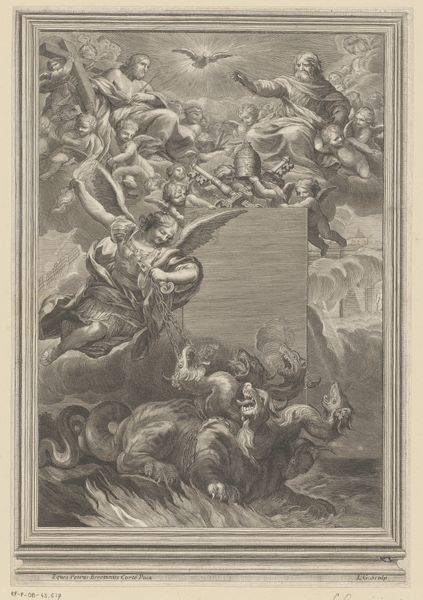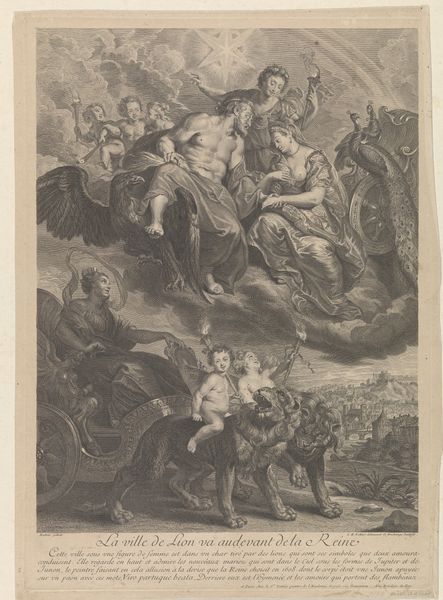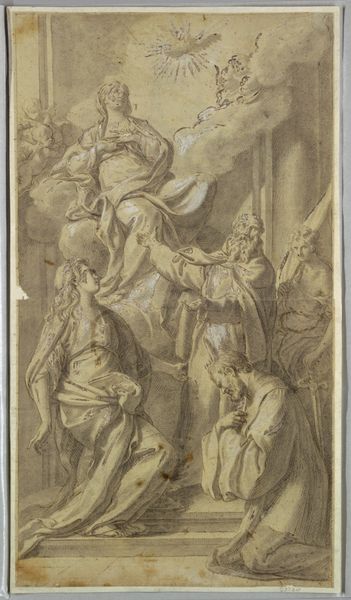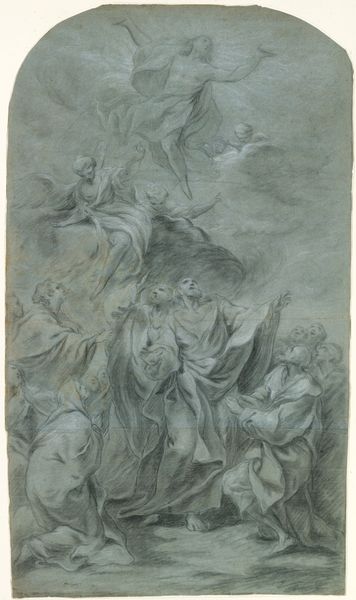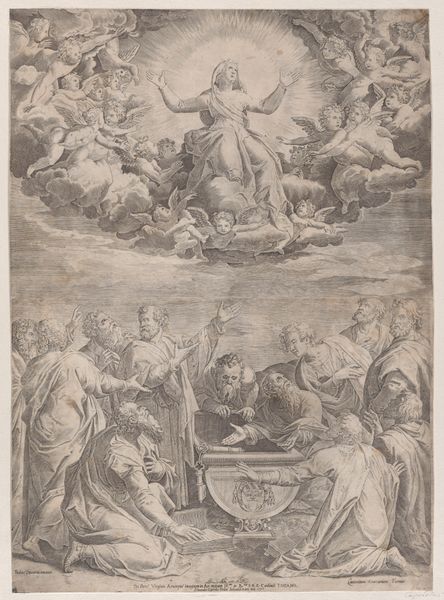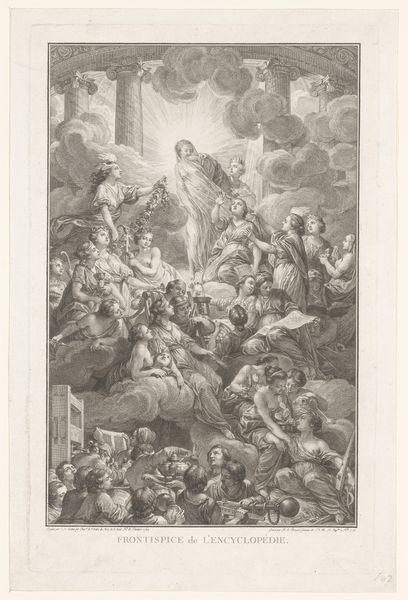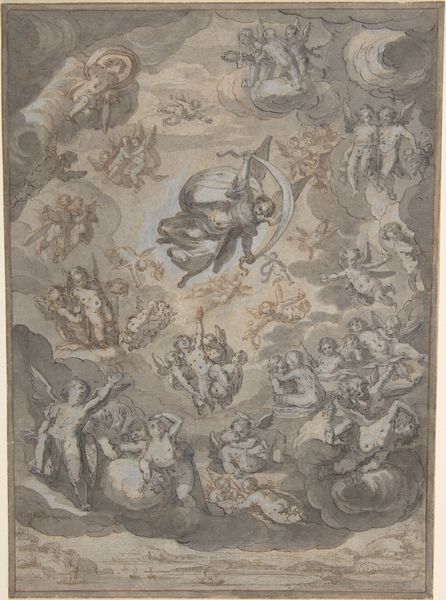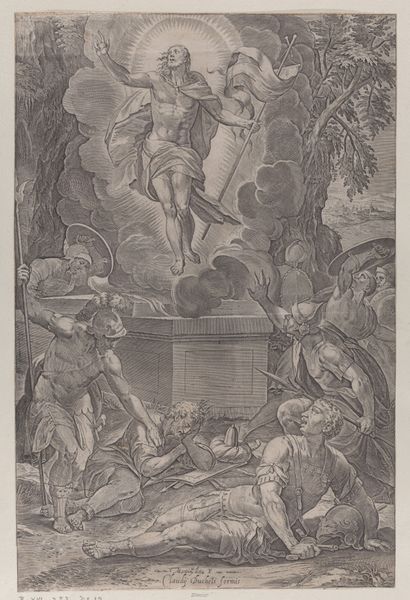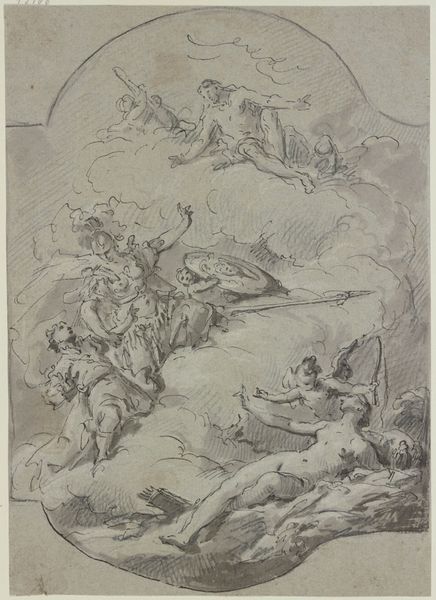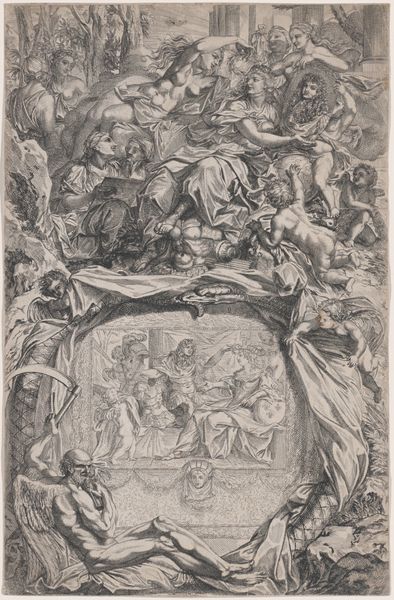
Dimensions: 13 5/16 x 9 1/4in. (33.8 x 23.5cm)
Copyright: Public Domain
Editor: Here we have Francesco Narici's "The Assumption of the Virgin," likely made between 1751 and 1779, it appears to be either a drawing or a print. There's a really strong upward movement created by all the figures rising into the clouds. What can you tell me about its historical context and why it might have been created this way? Curator: Well, depictions of the Assumption gained tremendous popularity during the Baroque period as the Catholic Church sought to reinforce its doctrines and appeal to a broader audience amid the rise of Protestantism. The powerful imagery served as visual propaganda, asserting the Virgin Mary’s unique status and the power of the Church. The almost theatrical composition of this print likely had ties to contemporary debates and social pressures. How do you see that manifested visually here? Editor: I see how Mary's literally elevated position above the other figures emphasizes the theological importance. Is it usual to see her positioned above a gathering of observers? Curator: Absolutely. Consider the institutional control over the narratives. The Catholic Church heavily commissioned and promoted such artwork to disseminate its message, which impacted public perceptions and interpretations of religious dogma. Who do you think were the intended audiences? Was it the wealthy or more widespread? Editor: Considering the print medium, it was probably targeted to a wide distribution in order to reach a larger public rather than exclusive circles of elites. So the image of the Assumption becomes both a statement of faith and a socio-political tool? Curator: Exactly. Studying art in relation to historical movements sheds light on these intersections and helps us to unravel how images can embody power dynamics and ideologies. What's your takeaway on this Baroque piece? Editor: I understand better now how the seemingly simple artistic choices reinforced social and religious hierarchies, extending the Church's influence far beyond religious settings.
Comments
No comments
Be the first to comment and join the conversation on the ultimate creative platform.
